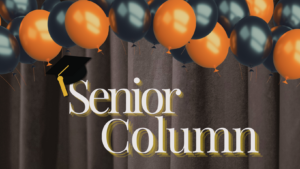‘The Grand Budapest Hotel,’ a recap
Wes Anderson’s ability to persevere beyond the Independent Cinema era of the 1990s speaks to the extent to which his films reach to.
I have fallen in love with his use of coordinated color palettes, characteristics of the different parts of the film and subtle references that add to the artistic quality. Anderson’s ability to transform a shuttered department store and filming locations throughout Europe affirm his embodiment of representing a modern-day auteur.
“The Grand Budapest Hotel” is one of my favorite films and was well received at the box office having raked in over $172 million globally, far exceeding the $25 million budget, according to IMDbPro.
Anderson split the film into five parts, a characteristic common among modern-day auteurs, such as, but not limited to, Quentin Tarantino. This allows for smooth transitions within the film that eventually tie up the plot. In fact, I’ve seen “The Grand Budapest Hotel” nearly a dozen times, and I still receive great satisfaction after each screening. The picturesque film is characterized by an action-packed journey that establishes how Zero Moustafa, a lobby boy turned wealthy man, came to own the once eminent hotel in the fictional country of Zubrowka.
The opening moments of the film greet you like a warm hug as Anderson incorporates the first of many moving deep-focus shots that establish the importance of an individual. The camera follows Jella Niemann, a young girl responsible for introducing the story of the hotel, as she grips the life’s work of the Author. The two buildings in the background remain perfectly centered with a distinct line splitting the frame in two–a characteristic shining a light upon a particular subject Anderson has embraced to his advantage. This is what first drew my eye to Anderson’s unique style.
Various situations called for certain color palettes, such as the representation of a dingy-looking 1960s interior of the hotel masked with hues of burnt orange, gray, silver and brown. Thirty-odd years earlier, the Grand Budapest was blanketed with tones of pink, white and purple all of which highlight the significance of this time in Zero’s life where he was most content.
As the story begins in the late 1960s, the young Author is introduced to the elderly Zero Moustafa and sits down for a meal to hear about the rise and fall of the hotel. This is where “Part 1 – M. Gustave” is ushered in. I’m taken back to the 1930s where a neatly groomed and fast-paced concierge comes into view and is commanding hotel staff all around. Gustave, Zero’s mentor, is accustomed to an extravagant life as he philanders with vulnerable elderly women seeking love and attention in return for the finer things in life. This section of the film establishes key components to the story of Zero’s life, such as the introduction of his late wife Agatha and the meaning of his name; Zero represents the absence of his family, lack of proper work experience and education.
As the story moves forward, “Part 2 – Madame C.V.D.U.T” launches a major conflict in the film where Gustave is falsely accused of Madame D’s murder. Madame D is one of the lonely elderly women thriving off of Gustave’s attention and sexual relations. That is until she was found dead, raising eyebrows around the circumstances.
Another instance to point out concerning the color palette are the tones of white, blue and gray as Gustave and Zero are headed to view the corpse of the deceased Madame D. In addition to the colors, the wintry weather is symbolic of the deaths that occur throughout the film.
At the reading of her will, Deputy Kovacs, first introduced as a delegate to oversee the smooth running of the hotel, is the attorney responsible for executing the final wishes of the dearly departed. This notable detail first establishes that she was the unrevealed owner of the hotel all along.
As per the will, Gustave is left with a fictional painting, referred to as Boy with Apple, meant to represent the Renaissance Era, sparking a heated interaction with her vile son Dmitri. Gustave slips away from the reading of the will to run off with his newly found fortune and departs for the hotel. Unbeknownst to Zero and Gustave, Serge X, a butler at Madame D.’s estate, slips in a confidential letter on the back of the painting that is revealed later in the film. Unfortunately for Gustave, the worst is yet to come. After successfully stowing the painting at the hotel, the Lutz police force storms in to arrest Gustave as the suspected murderer of Madame D.
Gustave’s arrest as presented in “Part 3 – Check Point 19 – Criminal-Internment Camp” leads to the most interesting part of the film. In Gustave’s absence, Zero fills his role of speaking to the hotel staff and maintaining the attention to detail that make the Grand Budapest a beloved destination.
Gustave sent a letter from prison, and as the staff listens to Zero relay the message, not a soul begins to stuff their face until given the green light, just as Gustave would do. This comical moment is a nod to Zero’s growth in the film starting out as an inexperienced lobby boy employed on a trial basis to working toward becoming his mentor’s inevitable successor.
As for Gustave’s stay in prison, he laughably speaks and attends to his fellow inmates as though they are his guests; Gustave maintains a sense of warmth and care for people, such as in the scene where he prepares a bowl of mush to the Giant Convict, a deed that will later be repaid.
Anderson’s inclusion of dry humor makes this film even more of a pleasure to view. For instance, the moment where Gustave is sharing a pastry from Mendl’s, his favorite pastry shop, with his cellmates in which he requests a throat slitter, or knife, to slice the confection in half. Of all the ways to use such a tool, these men chose a rather innocent route.
Nonetheless, Gustave’s friendliness with his cellmates pays off as they include him in a plan to escape from the prison and re-enter the free world. Harvey Keitel’s character in “The Grand Budapest Hotel,” Ludwig, is one of the cellmates coordinating the escape. Their plan becomes more of a reality as Zero is able to convince his then-girlfriend Agatha, the pastry chef, to conceal mining tools enclosed in Mendl’s boxes and covered in fondant.
An honorable mention in this part of the film is another cellmate’s name, Wolf, which is a tip of the hat to Tarantino’s hit indie film of the 1990s, “Pulp Fiction,” where a saving grace by the name of Wolf rescues two main characters from a messy and bloody situation. Keitel’s character Wolf in “Pulp Fiction” and Ludwig in “The Grand Budapest Hotel” plays a key role in committing a crime essential to the plot of the story.
As for the well anticipated moment where Gustave finally makes progress toward freedom, the Giant Convict saves the escapees’ hides as he swiftly silences a loudmouthed inmate that nearly compromises the getaway. The cellmates’ successful breach of the prison’s barriers grants them freedom, which leads to the conclusion of the film.
“Part 4 – The Society of the Crossed Keys” reveals an underground network of hotel concierges that assist Gustave and Zero in escaping the vicinity of the prison to work toward clearing Gustave’s name. M. Ivan, one of the concierges in the Society of the Crossed Keys, directs Gustave to the whereabouts of Serge X, an important person responsible for uncovering the truth behind Madame D’s death. Shortly before he’s strangled by the eerie force of death, Jopling the hitman, Serge X fails to reveal to Gustave and Zero of the mysterious confidential letter seen in the second part of the film. He unknowingly stuck the envelope to the back of Boy with Apple that entails the secondary will of Madame D to take precedence in the event she is murdered. However, you can always count on the unexpected to occur.
Given that this part of the film takes place during the 1930s, a decade filled with global hardships, the Spanish Civil War and the initiation of WWII, Anderson wanted to provide a different take on these occurrences than we are accustomed to seeing on the big screen.
“Part 5 – The Second Copy of the Second Will” represents the war-ravaged decade by opening the scene with the elderly Zero stating that war had finally begun followed by “ZZ” insignia emblazoned on banners hanging throughout the hotel, on the uniforms of soldiers and even on the sides of steel cocktail shakers. The inclusion of “ZZ” insignia during wartime in the film is perhaps a nod to the “SS,” the paramilitary force behind the many atrocities committed by Nazi Germany.
Once they arrive at the hotel, Gustave and Zero send Agatha on a mission to recover Boy with Apple from inside the vault. Agatha is nearly cornered by Dmitri as he attempts to take back the painting. Zero and Gustave are caught in the middle of a shootout as Dmitri attempts to execute them while Agatha finds herself clinging onto dear life as she dangles from the side of the hotel along with the painting. Zero dodges bullets as he rushes to save his beloved where he ends up stuck in the same situation clinging onto the side of the building. The two wind up plunging through the Mendl’s delivery truck below, where viewers are greeted by the iconic image of Zero and Agatha surfacing in the sea of pink pastry boxes.
Once Boy with Apple is yet again retrieved, the confidential letter containing the secondary will is opened and read aloud among a crowd of hotel staff and soldiers, establishing Gustave as the sole heir of Madame D’s massive fortune. Gustave had placed Zero as his sole heir, in which after his untimely death, Zero becomes a wealthy man and owner of the Grand Budapest. The grand tale of how Zero came to own the hotel has finally been answered through a series of intertwining lives, a prison break and difficult times surrounded by war.
“The Grand Budapest Hotel” explores the concepts of memory and tragedy as Zero reminisces about his life while dining with the Author. Zero endures not only the loss of his mentor but his young wife and unborn son. Anderson’s ability to transform rather mundane scenes to eye-catching sets add to this film’s uniqueness in allowing me to escape reality for a time and exist within his scenic cinematic universe.
Upon first glance, I didn’t perceive the film as a breeding ground for tragedy, but this merely ties into Anderson’s brilliance. Anderson is preparing for the release of a new film, “The French Connection,” this year waiting to blossom into yet another massive success.






